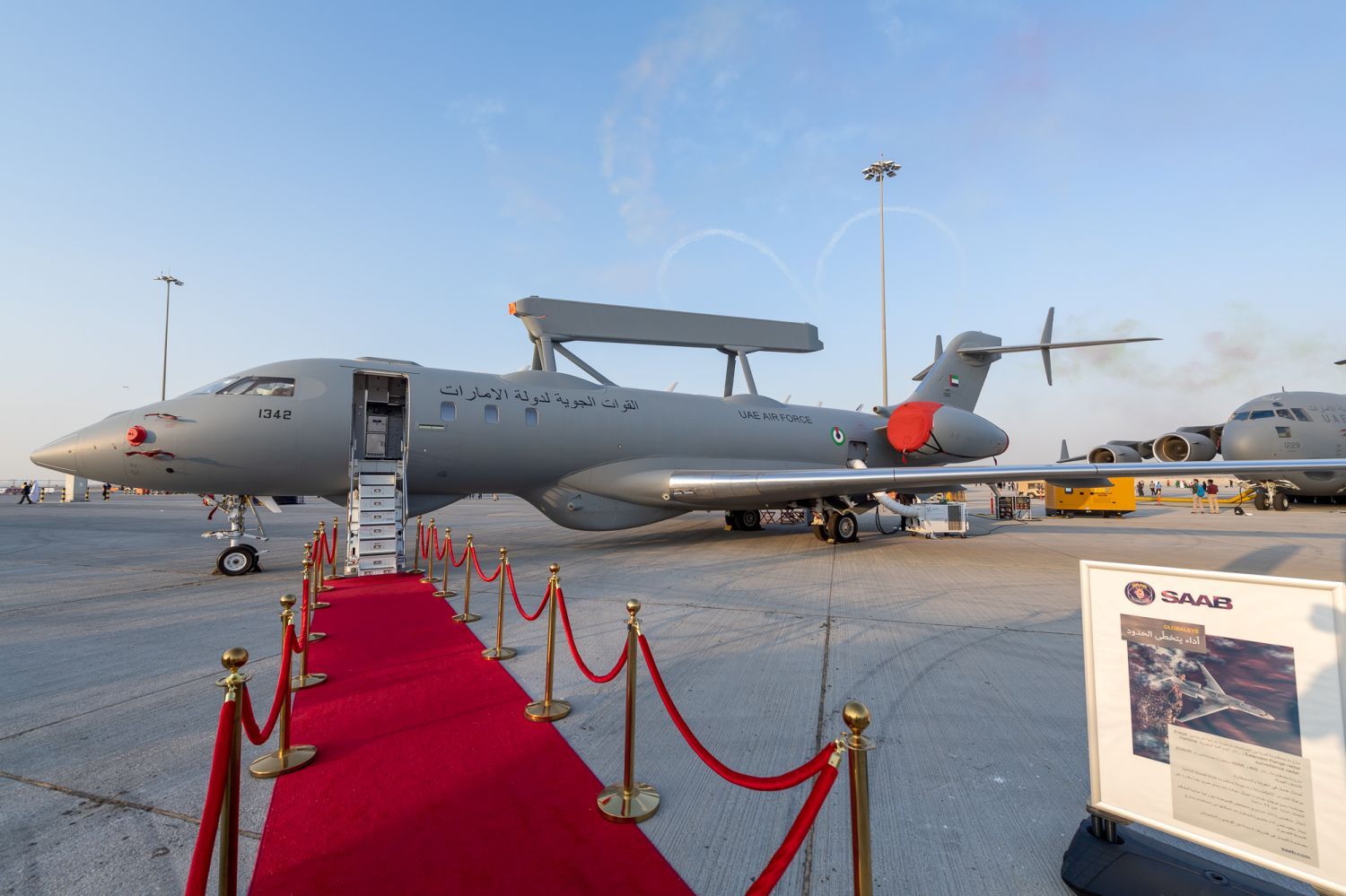During the current edition of the Dubai Air Show, the renowned Swedish company made a presentation to the specialized press on one of its most outstanding products, the GlobalEye AEW&C airborne early warning and control aircraft.
The presentation, concise and clear, focused on the features that differentiate the GlobalEye from other systems with similar characteristics and functions.
Main sensors
First of all, it is necessary to talk about its main means of detection, the Erieye ER advanced electronic scanning extended range (AESA) radar, installed on top of the aircraft.
It is an AESA S-band radar, whose 2-axis design allows it to cover a large scanning area of 240° around the aircraft. One of its main features is the use of Gallium Nitride (or GaN) technology in its transmitter/receiver modules. Compared to the previous technology used, the Erieye ER can work at a wider range of temperature and emission power, which brings significant benefits, not only in detection range (beyond 450kms for a fighter-sized target), but also in resistance to countermeasures and discrimination capability.
This last aspect is very important to Saab, which designed the GlobalEye to address new threats that have emerged over the past few years, as well as those currently under development. The strength of the Erieye ER lies in its ability to detect small, subsonic, supersonic, or very slow targets (e.g., drones).
But since the GlobalEye is a multi-domain application system, it also has the ability to detect and track targets on the sea surface or on land. For this purpose, it is equipped with a maritime scanning radar and an optronic detection and tracking system, both under the fuselage.
The maritime radar is capable of detecting all types of targets on the sea surface at great distances, from large ships to small targets such as speedboats and even submarine periscopes.

Thanks to its GMTI (Ground Moving Target Indicator) capability, it is also capable of detecting and tracking ground targets.
Once detection occurs, the targets can be identified by the highly sensitive, long-range optronic equipment. The EO system can also contribute to search efforts within the visible and infrared spectrum.
As a completely passive medium, the GlobalEye is equipped with a variety of antennas that allow it to detect, identify and geolocate various types of electromagnetic emissions from air, land or sea origins.
The brain of the GlobalEye
All the sensors feed their information into the Command, Control, Communications and Computers (C4) system, which processes it and presents it to the operator in a coherent, integrated and orderly manner. GlobalEye’s C4 allows automatic and simultaneous tracking of up to 1000 targets.
Search parameters can be quickly programmed by operators. Within seconds the C4 system is able to display the targets of interest and they are automatically tracked, while the censors continue to scan everything else.
Operators can focus their attention on specific targets and transfer that information via data link to perform an intercept if the target cannot be identified as «friendly». The system for handling the interception of a suspect aerial target is straightforward and simple.
Ongoing modernization
Saab decided that the best way to adapt GlobalEye to changing and emerging threats is to work hard and constantly on the software.
Instead of large, costly and time-spaced modernization programs, Saab’s chosen path will be one of small modernizations and permanent upgrades. And the GlobalEye software architecture allows both the progressive increase of capabilities and the addition of new capabilities as requested by the customer.
Current operators and potential markets
The first customer for the Saab GlobalEye is precisely the United Arab Emirates Air Force, which purchased a total of 5 aircraft, so Saab feels quite «at home», with this product, at the Dubai Air Show 2021.
Saab is currently competing for the major Finnish HX contract, which is looking to replace its F/A-18 Hornet with new fighters. The Swedish company is offering the Finnish Air Force an interesting combo of Gripen E/F fighter aircraft along with 2 GlobalEye AEW&Cs.
Saab also participates in the Korean program for the acquisition of AEW&C aircraft for 2 units, competing against the Boeing E-7 Wedgetail, already in use in the South Korean Air Force.
On the other hand, as something more firm and concrete, the Swedish Air Force (Svenska Flygvapnet) recently announced its decision to replace its Saab 340 airborne early warning and control (AEW&C) aircraft with the much more modern and capable GlobalEye.





Comentarios
Para comentar, debés estar registrado
Por favor, iniciá sesión